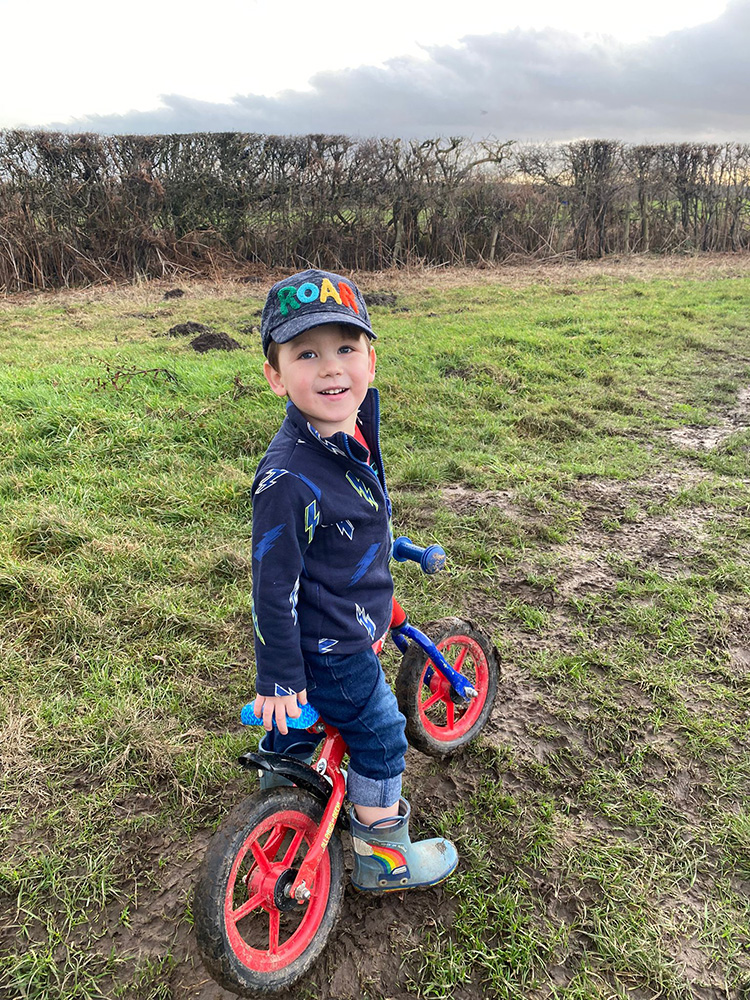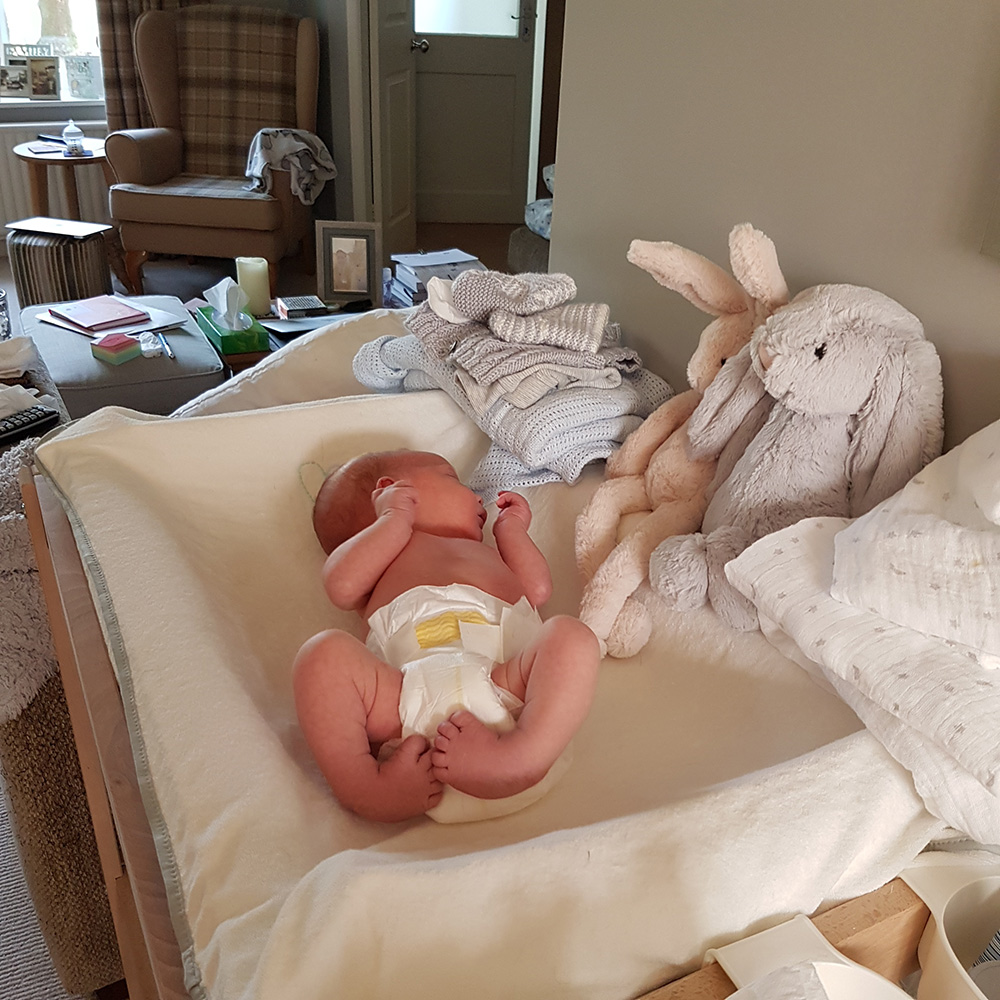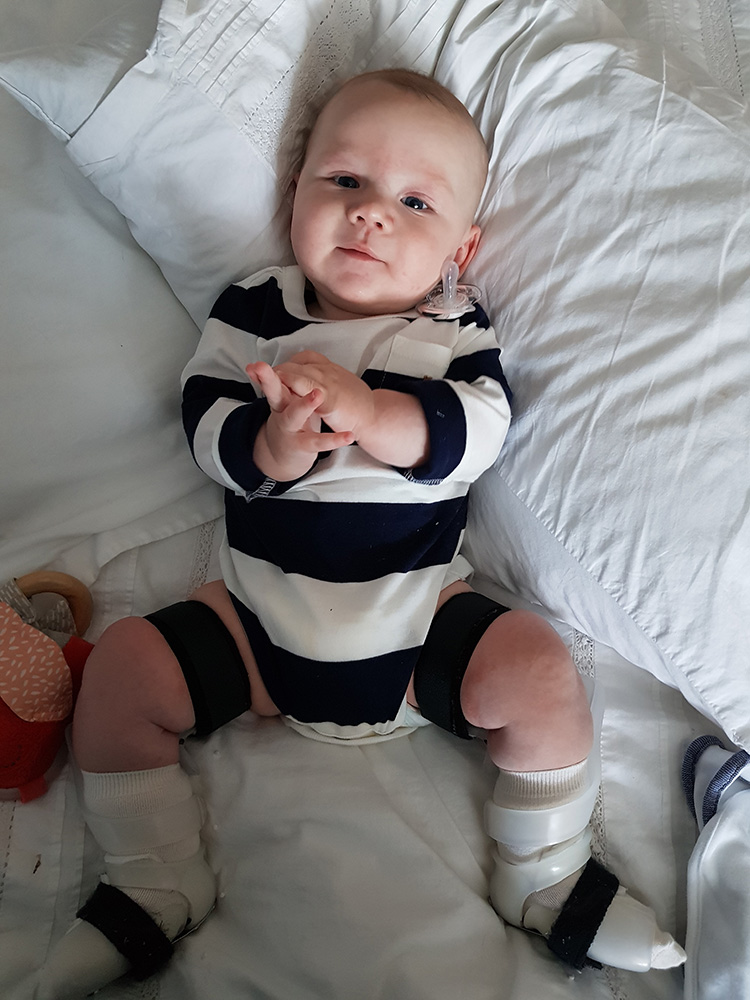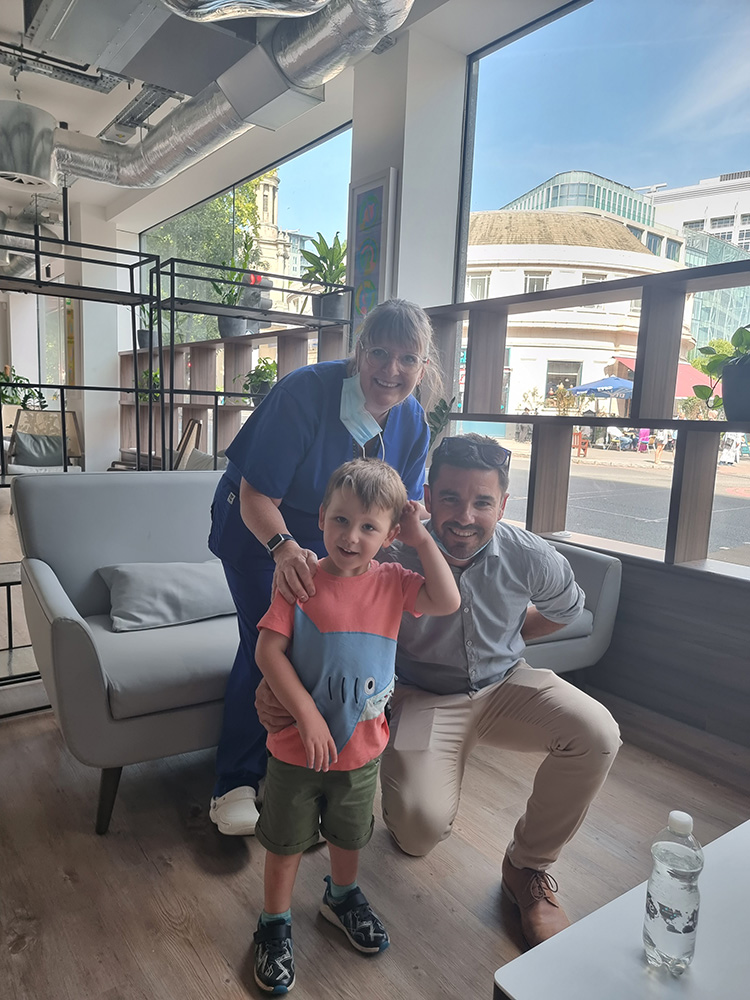
22 August 2022
It’s been a long journey but thanks to LOC and the Cunningham Brace, Rupert is nearly there
Rupert was a much-wanted baby for Kay and Kyle as Kay had had the misfortune to have had five miscarriages prior to his birth. “He was such a longed-for baby, so desperately wanted,” explains Kay. “It’s hard to put into words how it feels to be carrying a child after so many devastating losses, you become fiercely protective, while at the same time being filled with fear that your world might come crashing down again at any moment.” At her 20-week scan Kay’s baby was found to have a condition known as congenital talipes equinovarus (Club Foot). It is relatively common in the UK affecting around one in every 1,000 babies each year. It is a congenital deformity involving one foot or both, both feet are affected in around half of the children born with the condition. Both Rupert’s feet were affected. Kay says: “When Rupert was born his feet and legs were curled and twisted, facing the wrong way around. He wouldn’t have been able to walk without urgent treatment.”
There is an old, accepted treatment for Club Foot in the UK and most of the world, it is called the Ponseti method. It involves gently manipulating the baby’s foot or feet into a better position, then they are put into a cast. After this a tenotomy (small surgical incision) of the Achilles tendon is performed. Following this the baby has to wear special boots attached to each other. The “Boots & Bar” are worn full time for the first three months, then overnight until the child is four or five years old. Unfortunately, Rupert’s tenotomy was not performed correctly, there followed an agonising 6 months. Kay explains: We knew something was wrong, that the treatment wasn’t doing what it should”. Trusting her maternal instincts Kay sought a second opinion and found Denise Watson, an advanced paediatric physiotherapist at the Chelsea & Westminster hospital. She immediately confirmed Kay’s worst fears. Rupert had to have new surgery on his tendons and be put into casts again.

It was at this juncture that Kay decided to look for an alternative to the Boots & Bar approach that Rupert had endured for three months with little success. As Kay says:” Boots & Bar interferes with a baby’s life so much, no normal movement of the legs is possible, and sleeping is a nightmare.” Following extensive research, she found the Cunningham Brace, the brainchild of Jerald Cunningham who runs his own clinic in Maine, USA. Kay contacted Gerald and found to her delight that Jerald had recently met Sam Walmsley, director and lead orthotist at the London Orthotic Consultancy and that LOC was now licensed to provide the Cunningham Brace as a treatment for Club Foot in the UK. The Cunningham Brace is a flexible brace that is only fitted to the affected leg(s) and therefore allows movement for all the normal baby development activities such as crawling, rolling, standing, and even walking.

Rupert was fitted with his pair of Cunningham Braces at LOC in September 2018. For Rupert and indeed his parents, life was transformed. Kay says:” Sam is amazing, working so hard for his patients, he is absolutely determined to get the best results possible, he should be awarded an OBE. The brace is our friend, it works so much of the body, we all have a better quality of life and of course Rupert sleeps well now”.
Barring any unlikely mishaps, Rupert will be out of his braces by Christmas. Kay is determined to help parents who find themselves in the same position as she did. “There really is very little information for parents about the alternatives to Boots and Bar. I am talking to STEPS, a charity that works for those whose lives are affected by childhood lower limb conditions, about producing a simple information leaflet about Club Foot, the Ponseti method, Boots & Bar and the Cunningham Brace. Parents will then be in a position to make an informed decision as to what treatment to have for their baby.”

Rupert with Sam & Denise
If your baby has been diagnosed with Club Foot and you would like to discuss what LOC can do for you please contact us for an informed discussion.
Club foot, or clubfoot, is the general name given for a medical condition called congenital talipes equinovarus (CTEV). Congenital means that you’re born with the condition, which can occur in one or both feet. It is quite common, occurring in around one in every 1,000 babies born in the UK.
The Ponseti method involves manipulation and repeated weekly casting for about five to eight weeks. After that, a small procedure called a tenotomy is carried out under local anaesthetic to lengthen the tight heel cord – known as the Achilles tendon – in the back of your ankle. The treatment follows very strict, well-understood protocols and is the gold standard in corrective treatment for club foot. Indeed, the procedure is used and endorsed by Great Ormond Street.
The Cunningham Brace was designed by Jerald Cunningham, who runs his own clinic in the US. It works using a firm strap around the thigh and a spring that holds the brace up against the bottom of the foot. This means that the brace is always gently stretching your baby’s foot into the correct position, in a similar way that a therapist applies manipulation.
Jerald developed the brace at the request of an orthopaedic surgeon and colleague who saw how distressing the boots and bar process was for many children and parents. Jerald has worked on the design for more than 10 years, tweaking as he goes, based on x-ray evidence after every patient fitting.
No problem. Often parents come to us after they’ve tried persevering with the boots and bar treatment for a few months. It may change our treatment plan a little and your child might need treatment for a bit longer, but the process will essentially be the same.
At the moment we can fit the brace at our clinics in Kingston-upon-Thames and Bristol; in addition, we can do follow up appointments at our Manchester clinic. There is a certain amount we can do virtually, but your first fitting would need to be done in person.
We have the following facilities and amenities at our Kingston Upon Thames location:
We also have the Gait Laboratory for orthotics patients and Onsite Manufacturing for speedy turnarounds and adjustments whilst you wait.